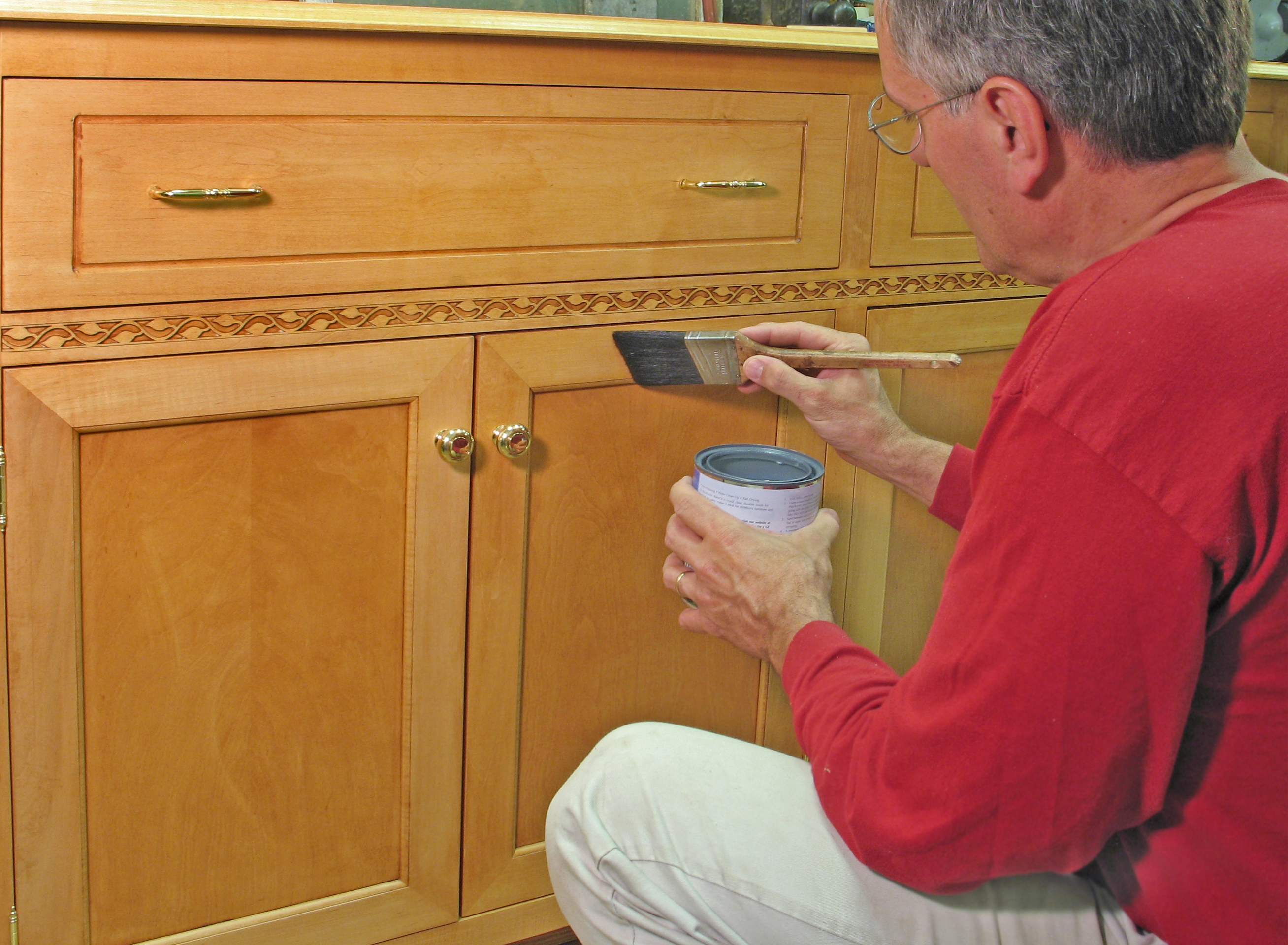Understanding Paint Bleeding

Paint bleeding, also known as color bleeding, is a common problem that can occur when painting cabinets. It happens when the underlying paint color shows through the top coat, resulting in an uneven and unattractive finish. This can be a frustrating experience for homeowners and DIY enthusiasts alike, but understanding the causes and solutions can help prevent it from happening.
Causes of Paint Bleeding, Painting cabinets bleed through
Paint bleeding occurs due to a combination of factors, including the type of paint used, the condition of the surface, and environmental factors. Here are some common causes:
- Incompatible Paint Layers: When applying a new coat of paint over an existing layer that is not compatible, bleeding can occur. For example, applying oil-based paint over latex paint can lead to bleeding because the oil-based paint may not adhere well to the latex layer.
- Improper Surface Preparation: Insufficient surface preparation is a major contributor to paint bleeding. This includes failing to properly clean the surface, sanding, or priming before applying the top coat. The presence of grease, dirt, or old paint residue can create a barrier that prevents the new paint from adhering properly, resulting in bleeding.
- Use of Low-Quality Paint: Low-quality paint may contain pigments that are not properly bound, making them more likely to bleed through the top coat. This is especially true for paints with high pigment concentrations or vibrant colors.
- Environmental Factors: High humidity or temperature can also contribute to paint bleeding. High humidity can cause the paint to dry slowly, allowing pigments to bleed through. High temperatures can cause the paint to dry too quickly, which can also lead to bleeding.
Addressing Paint Bleeding: Painting Cabinets Bleed Through

Paint bleeding, also known as color bleed, is a common issue that can occur when painting cabinets. It happens when the underlying paint layer, often a darker color, seeps through the fresh topcoat. This can result in an uneven and unsightly finish, ruining the overall look of your cabinets. Fortunately, there are several methods you can use to address paint bleeding and achieve a smooth, professional-looking finish.
Methods for Fixing Paint Bleeding
Addressing paint bleeding requires a combination of preparation, proper techniques, and the use of suitable materials. Here’s a breakdown of common methods for fixing paint bleeding on cabinets:
- Sanding: This is a crucial step in preparing the surface for repainting. Sanding helps to remove any existing paint that has bled through and create a smooth surface for the new coat. Use fine-grit sandpaper (120-180 grit) for sanding the surface gently. Be careful not to sand through the existing layer of paint, as this can expose the raw wood and lead to further bleeding.
- Scraping: In some cases, sanding may not be enough to remove the bleeding. For stubborn bleeding, scraping can be helpful. Use a scraper to gently remove the affected paint. Be cautious not to damage the underlying wood.
- Primer: Applying a primer is essential for preventing paint bleeding. A good primer acts as a barrier between the old paint and the new coat, preventing the underlying color from seeping through. Choose a primer specifically designed for blocking stains and bleeding.
- Specialized Coatings: In severe cases of paint bleeding, using specialized coatings can help address the problem. These coatings are formulated to seal the surface and prevent bleeding. Examples include shellac-based primers, oil-based primers, and stain-blocking primers.
Choosing the Right Paint Remover or Thinner
Choosing the appropriate paint remover or thinner is crucial for effectively removing old paint and preparing the surface for repainting. The choice depends on the type of paint used on the cabinets and the material of the cabinets themselves.
- Oil-based paints: For oil-based paints, use a solvent-based paint remover or thinner. Examples include mineral spirits, turpentine, and paint thinner.
- Latex paints: For latex paints, use a water-based paint remover or thinner. These are generally safer and less harsh than solvent-based removers.
- Cabinet materials: Consider the material of your cabinets. For wood cabinets, you can use a variety of paint removers. However, for delicate materials like laminate or melamine, use a gentle remover or thinner to avoid damaging the surface.
Comparing Paint Bleeding Solutions
Different solutions for addressing paint bleeding offer varying levels of effectiveness, cost, and potential drawbacks. Here’s a table comparing some common solutions:
| Solution | Effectiveness | Cost | Drawbacks | Sanding | Effective for minor bleeding | Low | Can be time-consuming and may damage the surface if not done carefully | Scraping | Effective for stubborn bleeding | Low | Can damage the surface if not done carefully | Primer | Very effective for preventing bleeding | Moderate | May require multiple coats | Specialized coatings | Very effective for severe bleeding | High | May require specialized knowledge and application techniques |
|---|
Painting cabinets bleed through – You know how sometimes you paint cabinets and the old color bleeds through? It’s a real pain! But imagine if you were designing a modern vintage master bedroom with those same cabinets. You could embrace the bleed-through as a vintage detail, adding a layer of history and character to the space.
The key is to choose a color palette that complements the bleed-through, maybe a soft gray or a warm cream, and then layer in some modern elements to balance the vintage vibe. It’s all about finding that sweet spot between old and new, and that’s where the real magic happens.
Painting cabinets can be a tricky process, especially when dealing with bleed-through from old paint. This is especially true if you’re going for a clean, minimalist look, like you’d find in a minimalist mid century modern bedroom. So, before you start painting, make sure to prep those cabinets well! A good primer will help seal in the old paint and prevent those pesky bleed-through issues.
